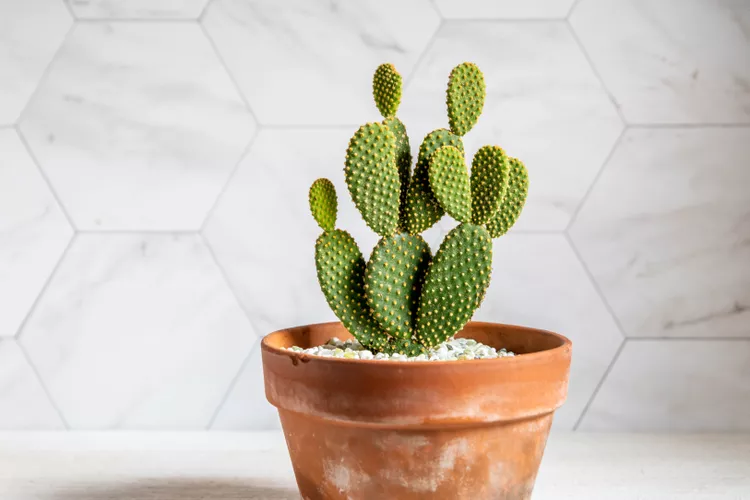
Popular indoor plants include the bunny ear cactus (Opuntia microdasys), which is not only eye-catching but also easy to care for. Opuntia microdasys is a native of Mexico and is also referred to as a bunny ear cactus, angel’s wings cactus, and polka dot cactus. Despite its attractive appellation, the rabbit ear cactus is equally as thorny as other cacti species with intimidatingly big spikes. Don’t be confused by its cute appearance. Each white “dot” on the rabbit ear cactus’ surface is actually a glochid, which are patches with hundreds of tiny spines that are prone to coming loose in the skin. Therefore, use caution when handling a rabbit ear cactus and safety gloves if required.
Bunny ear cactus features thick, segmented pads that range in size from 2 to 6 inches. They develop in pairs, giving it the moniker “bunny ear cactus.” The immature pads are reddish, and as they get older, they turn green.
Care
Light
When cultivated as a houseplant, the rabbit ear cactus needs regular exposure to strong, direct sunshine and should be put in the area of your home that receives the most sunlight. This cactus should, in a perfect world, get six to eight hours of daily direct sunlight. When grown indoors, this normally implies that it should be placed in a south- or west-facing window. You can also use a grow lamp to provide additional light. When growing cacti outdoors, make sure they are not placed in an area that is not shaded.

Soil
The bunny ear cactus prefers dry, sandy, well-draining soils, like the majority of cacti do. It is easy to find a typical cactus or succulent potting mix at most nurseries or garden centres. As an alternative, you can create your own potting mix at home by combining potting soil, coarse sand, and perlite in equal quantities.
Water
This desert plant can withstand droughts and doesn’t need to be watered frequently to survive. In actuality, the rabbit ear cactus is particularly sensitive to overwatering and is vulnerable to root rot if overly wet. When in doubt, wait a little longer before watering again after letting the soil completely dry out between applications. Keep in mind that cactus may last for weeks, sometimes even months, without water in the desert.
Temperature and Humidity
The bunny ear cactus cannot handle frost or high humidity levels and needs warm, dry environments. A well-draining potting mix and drainage holes in the potting container will help you maintain temperatures between 70 and 100 degrees Fahrenheit (21 and 37 degrees Celsius) and prevent too much moisture
Fertilizer
This cactus grows well in poor soils and doesn’t need routine fertilization. It can profit from a yearly application of a cactus or succulent fertilizer in the early spring to help boost growth during the active growing season.
Table





